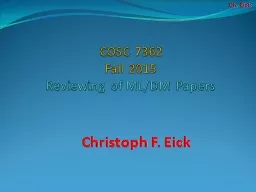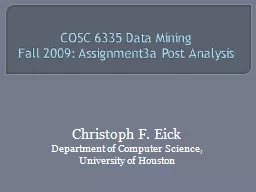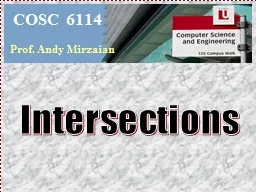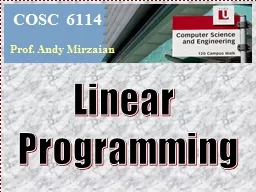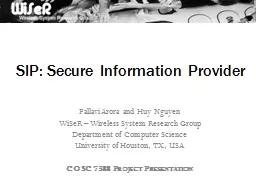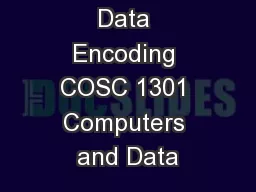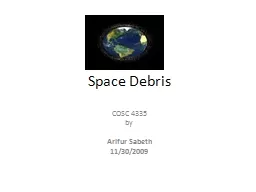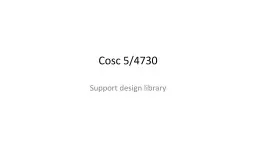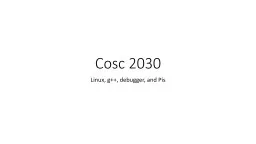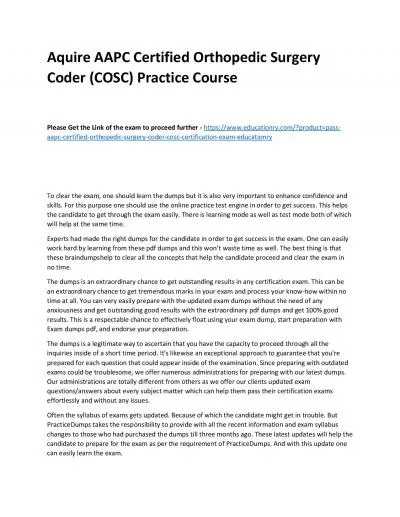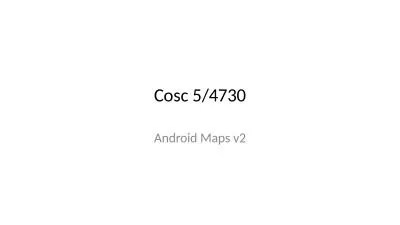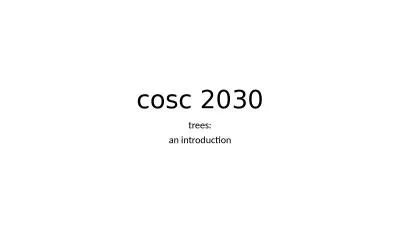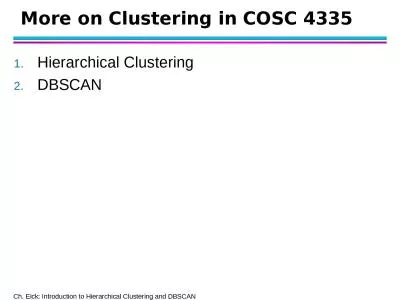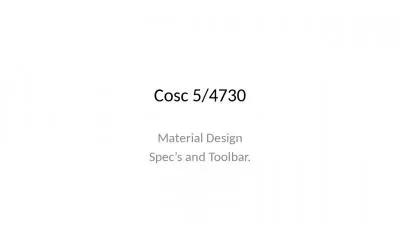PPT-COSC 7362
Author : marina-yarberry | Published Date : 2017-10-29
Fall 2015 Reviewing of MLDM Papers Christoph F Eick On Reviewing Reviewing has many roles in our society To help people to make selections To determine which research
Presentation Embed Code
Download Presentation
Download Presentation The PPT/PDF document "COSC 7362" is the property of its rightful owner. Permission is granted to download and print the materials on this website for personal, non-commercial use only, and to display it on your personal computer provided you do not modify the materials and that you retain all copyright notices contained in the materials. By downloading content from our website, you accept the terms of this agreement.
COSC 7362: Transcript
Download Rules Of Document
"COSC 7362"The content belongs to its owner. You may download and print it for personal use, without modification, and keep all copyright notices. By downloading, you agree to these terms.
Related Documents

